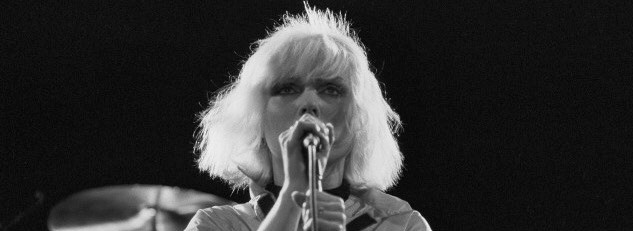
Parallel Lines saw massive success through most of 1979, where it spent 36 weeks on the charts, peaking at #6. Photo Credit: MusicID
Blondie saw massive success from the release of Parallel Lines, more than it had any other album released prior to 1979. The album peaked at #6 in late 1979 but spent over 30 weeks on the Billboard 100s. (Hoffman, 2004) The album reached a Gold certification from the Recording Industry Association of America in April of 1979. By June of that same year, the album received Platinum certification, having sold over a million units in the United States. That same month, Blondie was featured in Rolling Stone Magazine. During the interview, Debbie Harry discusses a wide variety of topics, from growing up to developing Blondie’s music, and even the rise of new wave, and where punks place was.
Blondie saw plenty of success from the release of Parallel Lines and its blend of rock-like drumming, funk-emulating synth, and pop-style vocals. A review of the album by Rolling Stone claims that in the collection,” the band drops the brooding artiness of its previous records and comes on like an ambitious pop-rock group. Or rather, a rock & roll band with an ambitious pop vocalist named Deborah Harry.” (Tucker, Rolling Stone)
With the popularity of Blondie and the success of Parallel Lines, an unexpected result came about. The walls between rock and disco began to break down. Prior to Blondie, Rolling Stone Magazine rarely focused on the happenings of disco, worried that in focusing on it, they would potentially alienate their white, male audience. A writer at Rolling Stone, Peter Herbst, talked about how the staff at the magazine usually associated disco with people “outside of the rock and roll population that we belong to personally … black and gays and women” (Echols, 74) These writers themselves were also white and male, often being hostile to disco and its fans.
Blondie had begun to cement itself into a new area of music. Some rock groups accused Blondie of creating “bubblegum music,” especially after their early work doing covers of songs that were popular in the 50s and 60s. The band bassist Gary Valentine once stated: “What Blondie was trying to do at the time was not so much bubblegum, but it certainly hearkened back to the 1960s AM radio Top Ten.” He compared Blondie to the Ramones in the fact that the Ramones had initially wanted to be The Bay City Rollers, a more upbeat and pop-oriented band than what they ended up being.
The changes to their music paid off though, and by the time that Parallel Lines went multiplatinum, Blondie had more young fans than the older hipster contingent that Blondie was first attracting. While Blondie had every intention of appealing to a younger crowd, they never expected as massive of a response as they did from younger people. Blondie keyboardist Jimmy Destri during an unpublished interview with a New York Rocker writer said: I would like to bend and twist fourteen million thirteen-year-old minds. I’d just like to have the same effects on kids The Beales had on me.” (McLeod, 21)
